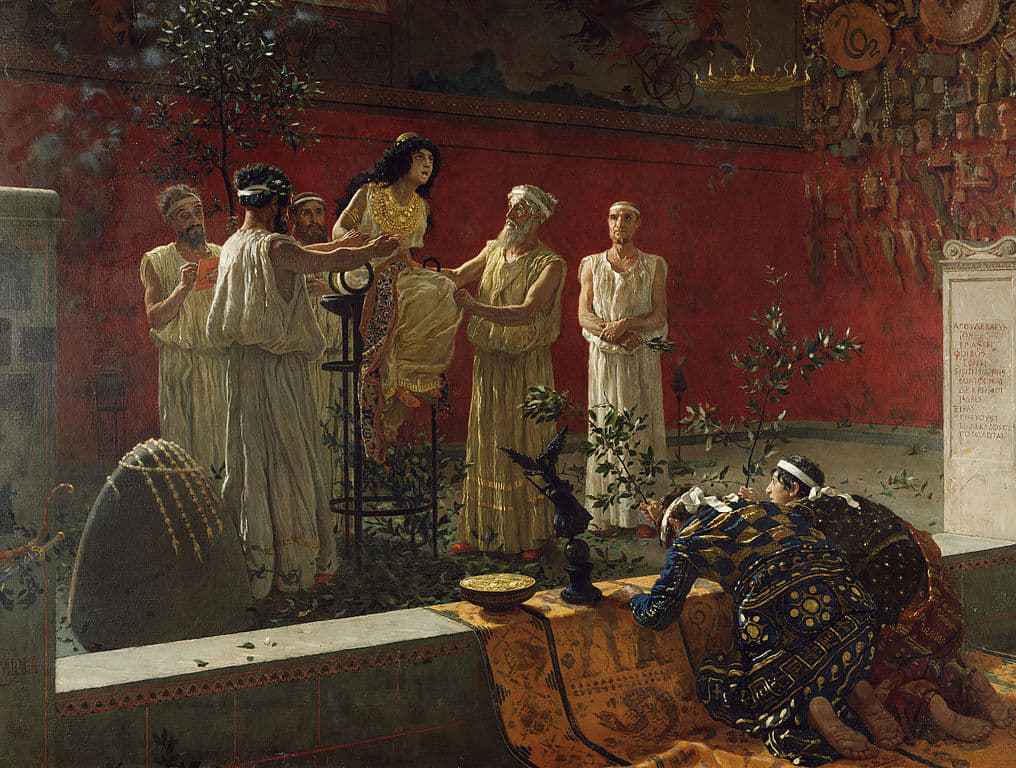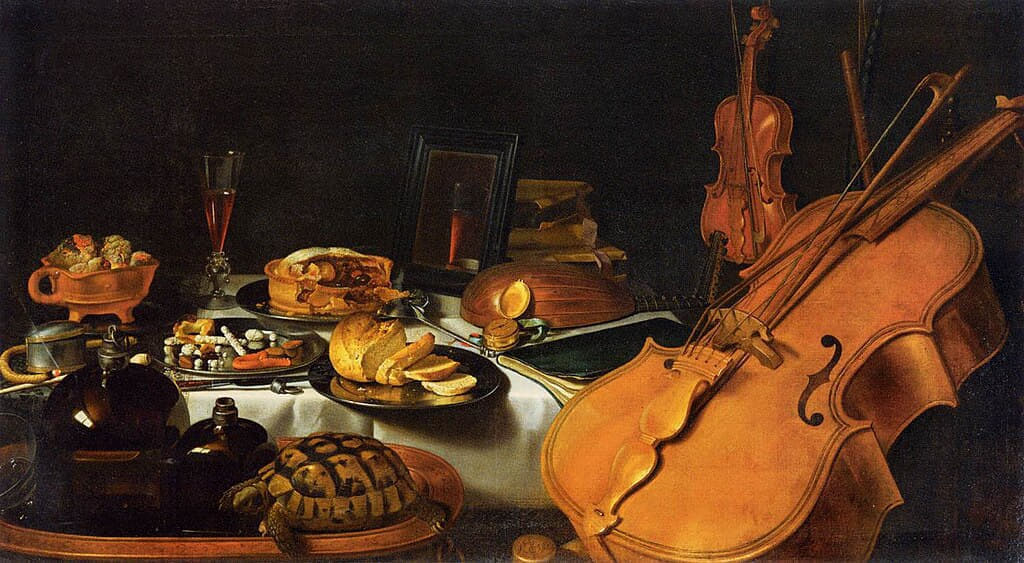The Spanish philosopher, Gustavo Bueno Martínez (1924-2016), is known for the system he created and which he called, “philosophical materialism,” which holds that philosophy is neither science nor wisdom but second-degree knowledge, in that philosophy requires first-degree knowledge (biological, mathematocal, political, technical) before it can begin to constitute itself. Bueno is an important thinker of the right. In the article that follows, Bueno recoups “oracular philosophy,” from the denigration given it by positivism.

1
The expression “Oracular Philosophy” was used by Karl Popper in the second part of his famous book, The Open Society and its Enemies, written during the Second World War and published in 1945, in two volumes, the first devoted to Plato and the second to Hegel and Marx (it would seem that Popper’s offensive against the Soviet Union, very little “political” at a time when the Soviets were entering Berlin, was diverted towards Plato and Hegel, through whom Nazism could be glimpsed). Indeed, in the second part, entitled “The High Tide of Prophecy,” the opening chapters, 11 and 12, are devoted to “The Rise of Oracular Philosophy,” where Hegelianism is discussed. Chapter 24, under the heading “The Aftermath,” is entitled “Oracular Philosophy and the Rebellion against Reason.”
These chapters by Popper constitute an attack on what he called “oracular philosophy,” an idea very close to the most elementary and naive positivism, along the lines of the old dichotomies proposed by Lévy-Bruhl (prelogical thinking/logical thinking), or in the distinction of W. Nestle (myth/logos).
For Popper, oracular philosophy is that philosophy which, instead of resorting to “reason” (“that is to say, to clear thinking and experience”), resorts to the methods of prophecy, revelation or oracle, unfolding towards a vision of the future of human societies which, instead of being exposed through clear reasoning, reaches for the most irrational methods, such as oracles, founded more on a mystical and irrational inspiration than on a philosophical discourse. The oracular philosophy, according to Popper, despises other men, because it has the conviction of the truth of its intellectual intuition (“Plato believed that reason is shared only by the gods and by a few select men”). The oracular style of philosophizing avoids dialogue, preferring to speak dogmatically, as if the foundations of the predictions and the content of the predictions were thoroughly known. The critique of oracular philosophy is thus directed against totalitarian thinking.
Popperian anti-totalitarianism, radical in 1945, formed a reservoir for the anti-totalitarianism of ‘68, and most especially for that editorial movement that took the name of nouveaux philosophes, with a common root, re-created through Michel Foucault, which continued in two distinct currents: the one taken by André Glucksmann (1975: The cook and the man-eater, a reflection on the State, Marxism and concentration camps) and Bernard-Henri Lévy (1977: Barbarism with a human face); and the one taken by Alain Baidou.
2
For our part, we have always been faced with the radical, disjunctive opposition to any oracular philosophy as such. An oracle is a channel of expression that (especially if it presents itself in the guise of a shaman or prophet) cannot reduce the flows that it channels, and therefore it cannot be accepted that the expression “oracular philosophy” is a contradictory impossibility, a “wooden iron.”
Philosophy, as an institution, did not come out of nothing, out of prelogical thought, nor did it emerge in the years in which “reason” freed itself from the mystical mists of “myth.” Philosophy began with the oracles, and remained in history, to a certain extent, in function of them.
Ancient philosophy, for example, manifested itself, first of all, through the oracle of Delphi, when it advised those who approached its precincts: “Know thyself.” For this oracle was taken up by Socrates, and centuries later by Linnaeus, who, in the tenth edition of his Systema naturae, identified the oracular message, no less, to define Man as Homo sapiens, and later as Homo sapiens sapiens.
Philologists usually warn that the “road map” proposed by the Delphic oracle did not have a humanistic-metaphysical objective, but a much more prosaic and pragmatic one (know your possibilities of action, curb your hybris!). However, this pragmatic and prosaic norm could have evolved, becoming the norm of Man himself or of Humanity in general (at least until Man himself ceased to exist). And this evolution would have the same scope that the logos, subsequently to a situation as insignificant as could be the theorem of the diametrical triangle of Thales (intuited “oracularly,” not proven, but asking for a hecatomb), could have developed applying itself to other domains of the cosmos, and even to the same spherical cosmos of Anaximander or Empedocles.
But oracular philosophy not only flowed through the oracle of Delphi; it flowed again through the oracles of Ephesus, from the temple of Diana, which had been visited by Heraclitus and by St. John. It was, in short, the Christian oracles that, confronted with the Jewish and Mohammedan oracles, announced that God was not unique, individual, but that he was triune, Father, Son and Holy Spirit. And this oracle would have been the one that succeeded, among other things, in transforming the ancient individual, the citizen who had already been transformed into a theatrical person through his tragic mask, into a real person.
“Towards the end of the second century there were two opposing monarchist currents, the modalist and the dynamist. The modalist is usually designated by the name of Sabellianism, because of its main representative, Sabellius. The Libyan Sabellius, who taught in Rome and was condemned by Pope Callixtus (217-222), proposed the following formula: One God in three persons, using the word according to its classical sense of role in the theater, of mask. God himself, insofar as He acts as Creator and Ruler of the world, is called Father; when he appears in the role of Incarnate Redeemer, He is called Son; in His role as dispenser of grace, He receives the name of Holy Spirit. This formula had the advantage of allowing Christ to be considered as true God. But at the same time, it eliminated the real distinction between Father, Son and Holy Spirit. According to it, God manifested Himself in three different ways (hence the name modalism), and therefore was called by three different names. This was tantamount to disregarding the testimony of Sacred Scripture, where the real distinction, at least, between Father and Son is clearly expressed. For the rest, Sabellianism was soon discarded. In Rome it was above all the learned presbyter Hippolytus who set himself the task of combating it.
The other direction of monarchianism maintains the real distinction between the Father and the Son, but in order not to endanger the uniqueness of God, it subordinates the Son to the Father (hence the name subordinationism). This direction then branched out into various systems in order to explain in what sense it was still possible to call Christ God: whether God dwelt in the man Christ or whether He conferred upon the man Christ divine forces (dynamis, hence dynamism). Such systems had already been condemned by Pope Zephyrinus (around 200-217), the predecessor of Callixtus, but at every moment they reared their heads again. In the second half of the third century, the bishop of Antioch, Paul of Samosata, was deposed by a synod for holding a similar doctrine. It seems, however, that even later analogous doctrines were taught in Antioch, especially by the learned Lucian, who died a martyr in 312. In the dogmatic polemics of that time, we find readily used by Pope Dionysius (260-268) the formula of the consubstantiality (consubstantialis, in Greek, homoousios) of the Father with the Son, thanks to which the solution was later found.” (Ludwig Hertling, S. I., Historia de la Iglesia, Editorial Herder, Barcelona 1964, second expanded edition, pp. 92-93).
However, the history of philosophical oracles remains to be written. It is necessary to enter more deeply into the analysis of the oracles that spoke in the schism of the West, through Luther, Calvin, Servetus or Newton; and, if you will, Kant or Nietzsche.
3
In any case, it would not be justified to confuse the history of philosophical oracles with the oracular history of philosophy, which we discussed in our Tessera 128, “Oracular Philosophy.” It could even be said that the oracular history of philosophy assumes an opposite perspective to the history of oracular philosophy, since the former aims to erase the halo of philosophers who deserve to be considered for their doctrines, while the latter aims to transform philosophers such as Schopenhauer, Nietzsche or Heidegger into oracles.
Such happens in the process of formation of new scattered groups of philosophy professors competent in editorial matters, which are incorporated in the anthological editions of the works of “great thinkers,” presenting, for example today, Schopenhauer, Nietzsche or Heidegger, rather as oracles than as formers of philosophical systems and acting from more or less mystical (oracular) coordinates of anarchist sign.
From 1915 to 1919, the popular library, Los grandes pensadores (The Great Thinkers), promoted by the heirs of the Modern School of Francisco Ferrer Guardia (whose librarian and editor, Mateo Morral Roca, threw the bomb on May 31, 1906 at the wedding procession of Alfonso XIII in the Calle Mayor in Madrid), selected among these great thinkers Voltaire, Rousseau, Diderot, Volney, Lamennais, Michelet, Victor Hugo, all under a common design on all covers, The Thinker by Rodin. In 1925 the library of the Revista de Occidente published six volumes devoted to The Great Thinkers: Socrates, Plato, Aristotle, St. Augustine, St. Thomas, Giordano Bruno, Descartes, Spinoza, Leibniz, Locke, Hume, Kant, Fichte, Hegel, Schopenhauer and Nietzsche. etc.
This article was originally published in El Catoblepas.
Featured: The Oracle, by Camillo Miola; painted in 1880.

